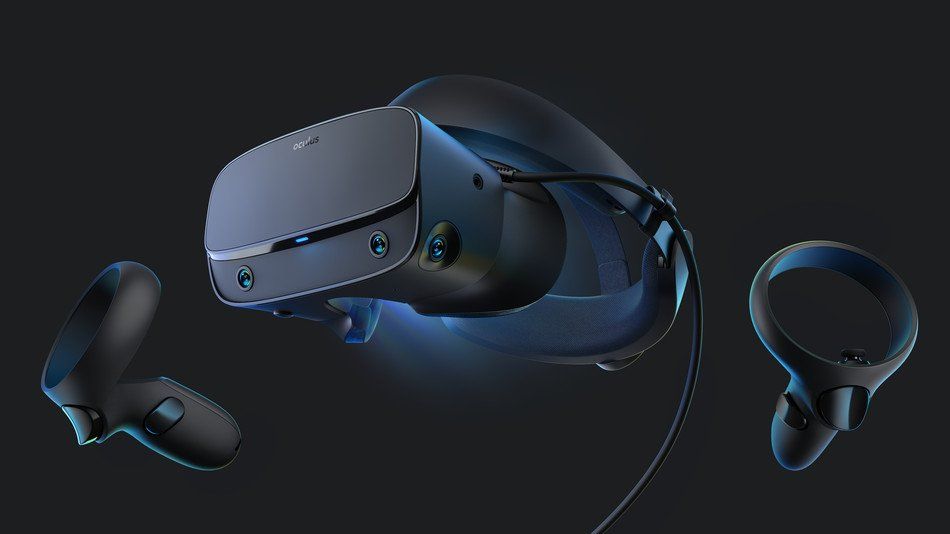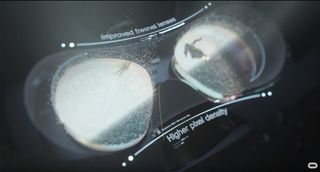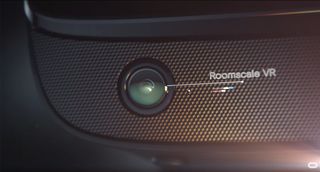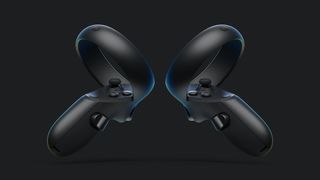New Oculus Rift S ditches the external sensors, costs $399
It's a checklist of all the things we wish were better about the Oculus Rift, in a neat new box.

While everyone was not-so-patiently awaiting an actual release date for the highly anticipated Quest headset due out this spring, Oculus surprised everyone this morning with an all new Oculus Rift for PCVR gamers. It's called the Rift S instead of the Rift 2, but from what we can tell it's an upgrade in just about every way you can imagine. And it'll be on shelves right around the same time as the Oculus Quest, with an identical $399 price tag.
Here's what we know so far!
New... well, everything

Oculus Rift S might as well be a re-imagining of the headset that launched this company to it's current state of platform dominance. The fresnel lenses have been improved for a more immersive feel, the pixel density in the new display under those lenses is greatly improved to ditch the Screen Door Effect (SDE), and the strap system for the headset looks a lot nicer thanks to a partnership with Lenovo's Legion division.
But the real feature here is what's called Inside-Out tracking. This means there are cameras on the headset itself to figure out where you are in the playspace, instead of the little stick cameras currently available on the Oculus Rift. Similar to Windows Mixed Reality headsets, you now just have a single cable running to you PC for a "world-scale" environment.
This new tracking system means new contorllers are needed, and it just so happens Oculus already had a shiny new controller system for inside-out tracking thanks to the work done with Oculus Quest. These new controllers take the big tracking ring and flips it up to the top of the controller so the cameras on the headset can better see it. There's some questions still about how well this new controller system tracks your hands when they are super close to you chest, but we'll see soon how that plays out.
Not quite Augmented Reality

Another big advantage to having the headset come equipped with a ton of cameras is the ability to occasionally use them for something other than tracking. We've seen this feature on a couple of VR headsets in the past, but Oculus calls this feature Passthrough+. This gives you stereo vision with depth perception thanks to the front cameras and the Asynchronous Space Warp functionality in the software, so you'll be able to walk around and in theory not feel quite so weird or disoriented.
With the ability to perceive depth through physical cameras and software that understands where you are in the real world, it's interesting that Augmented Reality isn't flat out advertised as a possible function here. The ability to interact with digital object or apps in this view seems like a great idea, but may not be something the company is willing to talk about until more exploration has been done.
Get the Windows Central Newsletter
All the latest news, reviews, and guides for Windows and Xbox diehards.
Everything you love from the Rift is here

Oculus was very clear this is a shared platform with the original Oculus Rift. Your games will migrate with this new headset, and you'll be able to play all of the same games you currently have access to. This headset is an evolution of an existing platform, not something new like Oculus Quest or Go. Which is great, especially for those with Day One headsets now considering an upgrade.
We're going to get a lot more details before the Sprint launch window for sure, as well as a full hands on with the headset soon, but for now it's good to see Oculus is making sure its PCVR fans know they are just as important as the rest of its growing community.
Russell is a tech nerd who chases the best of everything, from phones to game consoles to laptops and everything glowing or beeping. He's the Managing Editor of gaming content for Mobile Nations and can be found contributing to all of the Mobile Nations sites. Reach out on Twitter!
